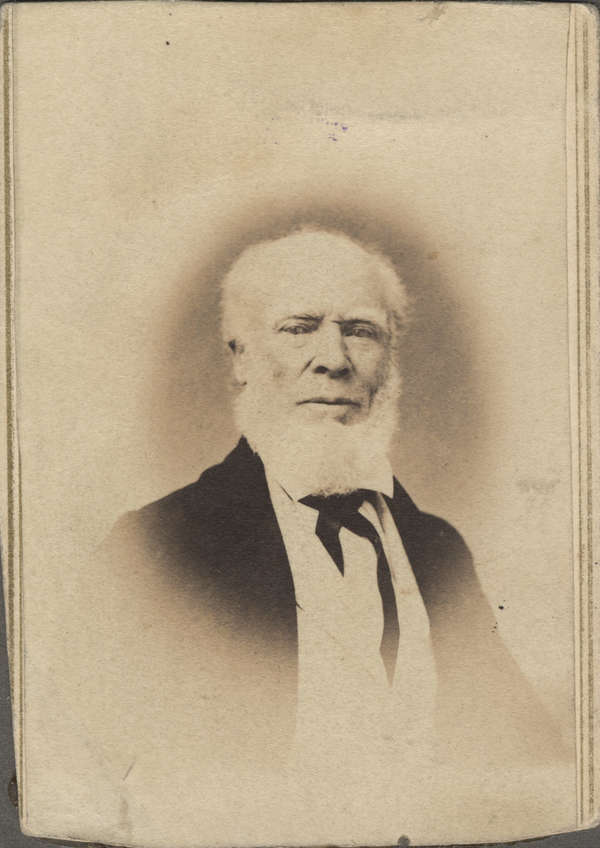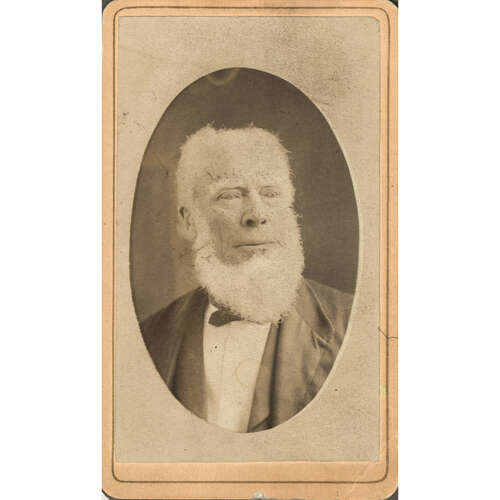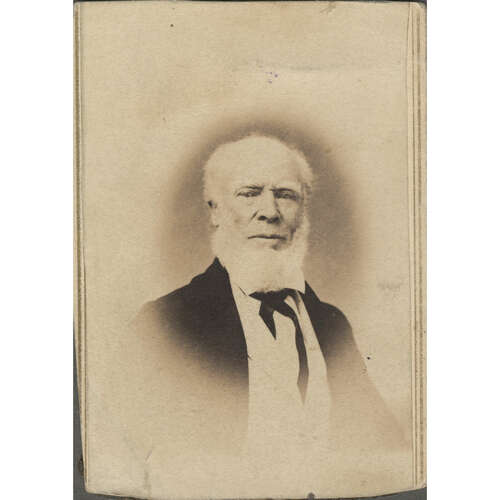
Source: Link
MANSON, DONALD, HBC chief trader; b. 6 April 1796 at Thurso, Caithness, Scotland, son of Donald Manson and Jean Gunn; m. October 1828 Félicité Lucier and they had eight children; d. 7 Jan. 1880 at Champoeg, Oregon.
Donald Manson was engaged by the Hudson’s Bay Company in 1817 and stationed at Rock Depot (Gordon House) on the Hayes River in present-day Manitoba. From there he went to Île-à-la-Crosse (Sask.) and various other posts in the English River district. An 1822 report noted that he was a “fine powerful active young man [and a] tolerable Clerk & Trader.” Manson, once described by John Tod* as a “ramping highlander,” had already begun to show his penchant for a rugged outdoor life. In 1822 he participated in expeditions led by Chief Factor Donald McKenzie* to the headwaters of the Missouri and South Saskatchewan rivers. Later in the same year, Manson travelled with Francis Heron to examine the Bow and Red Deer rivers for possible trading post sites. In 1824 he joined Chief Trader Samuel Black* on an important exploration of the Finlay River and the area west of the Rocky Mountains.
A report of 1825 confirms Manson’s reputation as a “Fine strapping fellow” who “would be thrown away at an Establishment, active service being his forte.” Late that year he was transferred as a clerk to the Columbia district, where, under John McLoughlin*, he helped to supervise improvements at Fort Vancouver (Vancouver, Wash.) with James McMillan* and John Work*. Then Manson was sent to build Fort Langley (B.C.) on the Fraser River in 1827. In the season of 1829–30, he was stationed at Fort George (Astoria, Oreg.), at the mouth of the Columbia. There he tried to rescue from the “Graveyard of the Pacific” two company ships, the William and Ann, which had gone down in March 1829, and the Isabella, which sank in May 1830.
Manson took charge of Fort Simpson (Lax Kw’alaams, B.C.) on the Nass River in 1831 and explored the stream during that season. He explored the Skeena River in 1832, finding not “one solitary spot” suitable for a post. The following spring, he constructed Fort McLoughlin (Bella Bella, B.C.) on Millbank Sound. In George Simpson*’s words, “Besides blasting and levelling, Mr. Manson, without aid of horse or ox, had introduced several thousand loads of gravel, while, by his judicious contrivances in the way of fortifications, he had rendered the place capable of holding out, with a garrison of twenty men, against all the natives of the coast.” Manson was promoted to chief trader in 1837 and remained at Fort McLoughlin until 1839, when he travelled to Scotland. During this trip Manson was presented to the governor and committee in London on 21 Oct. 1840.
Manson took over the Thompson’s River Post (Kamloops, B.C.) in 1841. During 1843–44 he was in charge of Stikine (Alaska), a post established in territory leased from Russia. One of his duties was to investigate the murder there of young John McLoughlin, son of the departmental governor. The senior McLoughlin was upset by Manson’s apparent lack of vigour in searching out the killers and handing them over to the Russian authorities for trial, but apparently there was no evidence on which he could act.
From 1844 until his retirement in 1857, Manson was based at Fort St James (B.C.) on Stuart Lake in the New Caledonia district. Unfortunately, the final part of his career was marred by complaints that he treated his subordinates roughly. More than once, Governor Sir George Simpson reprimanded Manson for his bad temper and his reputation for harshness, and warned that “club law” would not be tolerated. It would appear that Manson was denied promotion to chief factor primarily because of his rough and abrasive ways.
In October 1828 Manson had married Félicité Lucier, eldest daughter of Étienne Lucier, a former French Canadian fur trapper who became one of the first settlers to farm in Oregon. After his retirement from the HBC, Manson moved his family to Champoeg, Oregon, where he bought a farm on the banks of the Willamette River. The property was inundated by a flood in December 1861, but the house remained unscathed. After his wife’s death in 1867, Manson lived on at the farm until his own death.
Donald Manson was one of the many capable individuals who manned the farthest outposts of the huge HBC empire. Biographer Harriet Munnick describes him as “a typical trader in the employ of a great monopoly – tough, obstinate, a little grim, honest, humorless, and a titan for work.”
PABC, “Biography of Donald Manson,” typescript by J. A. Grant, 1938. Oregon State Library, Salem, Ore., Archives Division, U.S. Census Bureau, Population schedules, Oregon, 1860, Marion County, Champoeg Precinct, family no.2200; Oregon, 1870, Marion County, Champoeg Precinct, family no.961; schedules of mortality, Oregon, 1880, Marion County; Provisional Government recorder, Land claim records, 1845–49, 3, p.21. Canadian North-West (Oliver), II. Isaac Cowie, “The minutes of the Council of the Northern Department of Rupert’s Land, 1830–1843,” North Dakota State Hist. Soc. Coll., IV (1913), 644–862. HBRS, III (Fleming); XVIII (Rich and Johnson). Morice, History of northern interior of B.C. F. W. Howay, “Authorship of traits of Indian life,” Oregon Hist. Q. (Portland, Ore.), XXXV (1934), 42–49. H. S. Lyman, “Reminiscences: Mrs. Anna Tremewan,” Oregon Hist. Q. (Portland, Ore.), IV (1903), 261–64. H. D. Munnick, “Donald Manson,” Mountain men and the fur trade, ed. L. R. Hafen (7v., Glendale, Cal., 1965–69), VII, 217–25. W. H. Rees, “Donald Manson,” Oregon Pioneer Assoc., Trans. of the annual re-union (Salem), VII (1879).
Revisions based on:
Samuel Black, A journal of a voyage from Rocky Mountain Portage in Peace River to the sources of Finlays Branch and North West Ward in summer 1824, ed. E. E. Rich and A. M. Johnson (London, 1955), 5. Oregon Pioneer Assoc., Trans. of the annual re-union (Salem), 7 (1879): 21–22. Ella Strom, “Etienne Lucier,” in Willamette Heritage Center, Biographies and histories: www.willametteheritage.org/biographies-and-histories (consulted 24 Aug. 2020).
Cite This Article
Kenneth L. Holmes, “MANSON, DONALD,” in Dictionary of Canadian Biography, vol. 10, University of Toronto/Université Laval, 2003–, accessed April 16, 2025, https://www.biographi.ca/en/bio/manson_donald_10E.html.
The citation above shows the format for footnotes and endnotes according to the Chicago manual of style (16th edition). Information to be used in other citation formats:
| Permalink: | https://www.biographi.ca/en/bio/manson_donald_10E.html |
| Author of Article: | Kenneth L. Holmes |
| Title of Article: | MANSON, DONALD |
| Publication Name: | Dictionary of Canadian Biography, vol. 10 |
| Publisher: | University of Toronto/Université Laval |
| Year of publication: | 1972 |
| Year of revision: | 2021 |
| Access Date: | April 16, 2025 |




